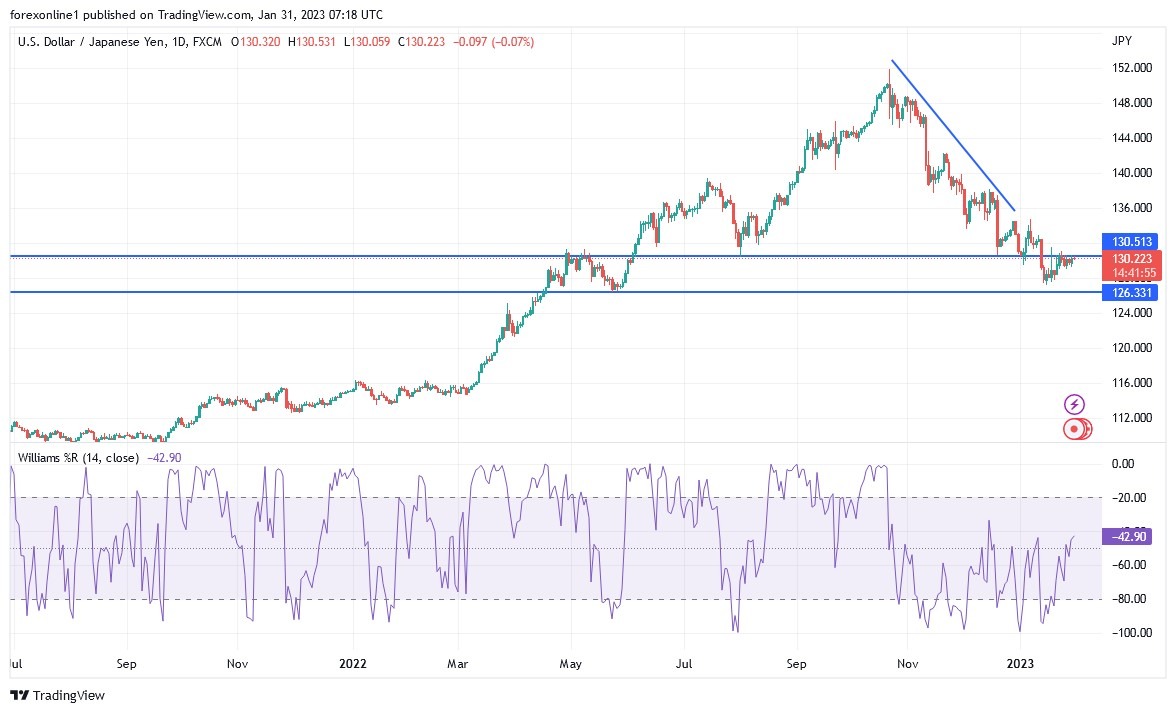- For the second week in a row, the price of the USD/JPY currency pair stabilizes in a limited path trying to get out of the downward channel.
- This may happen if it settles above the 134.40 resistance, as is the performance on the chart for the daily time frame below.
- I expect the price of the dollar/yen currency pair to remain in a narrow range until the reaction to the monetary policy decisions of the US Federal Reserve Bank this week.
This is in addition to the reaction from the announcement of the American jobs numbers, which will have a reaction on the sentiments of investors and the markets regarding the future of the American interest rate. The 129.10 support level will be important to confirm the bears' control over the direction of the USD/JPY currency pair.
Stephen Blitz, chief US economist at TS Lombard, an independent investment research firm, says that the US interest rate hike in January has "all the hallmarks of being the last". In a note to clients, Blitz says that all economic data now points to an imminent recession in the US and the Fed will be happy with evidence that the cost of money is finally getting to where the Fed wants it, which will help curb inflation.
But the analyst sees another reason why the Fed is eager to end the cycle of raising American interest rates soon: the perceived strength of the currency it issues. He added by saying "making the dollar weaker will become an undeclared goal - the trade deficit is very large given the government's policy aimed at re-increasing production."
The dollar rose - in real terms - last year to its highest levels in several decades amid the demand for the safe haven and the rapid increases in the interest rate at the Federal Reserve Bank, which exceeded its counterparts. By calling for an end to the hiking cycle, the Fed is removing the central pillar of the dollar's strength. The "policy spread" refers to the differences in interest rates that were a major driver of the dollar's strength. By allowing the other central banks to bridge the interest rate gap, the dollar's appeal diminishes, and its value is lost. This in turn could help improve the US deficit, as the analyst pointed out.
The Fed now has the cover of the slowing economy to end the tightening cycle. Gross domestic product is still growing in the last quarter of 2022, according to the latest official data, but the analyst says the mild recession that began in the second quarter appears to be on track. He adds by saying "The reductions will come as soon as employment becomes negative, or even drops to only 100,000/month", indicating that market expectations for an interest rate cut from the Federal Reserve Bank before the end of the year have reached the target.
The analyst believes that the most important use of the gross domestic product data for the fourth quarter is that the "short rates" finally exceeded inflation and the nominal growth of the final sales of the domestic product. He says: "The" tightness "is a matter of opinion, but the monetary policy is no longer "easy" and now it has become "tighter" - growth and inflation slowed down during the quarter."
One of the arguments against the Federal Reserve ending the cycle of raising interest rates soon is evidence that the financial conditions of the United States have become "easier", that is, the cost of money has been decreasing recently. This seems to defy the Fed's intentions by making money more expensive to bring inflation down again.
For their part, the experts at DNB Markets said: "It is clear that the recent easing of financial conditions is an argument for further raising interest rates."
The analysts are closely aligned with the expectation of a rise of 25 basis points but there is a difference of opinion about the nature of the guidance that will be issued regarding the possibility of further rises. The Bank of Canada last week raised interest rates again but made clear it would now halt the tightening cycle, prompting a reaction in financial markets that would suggest investors see this as a harbinger of guidance from the US Federal Reserve.
Ready to trade our daily Forex analysis? We’ve made a list of the best Forex brokers worth trading with.



